How Math Works
How Math Works
A Guide to Grade School Arithmetic for Parents and Teachers
G. Arnell Williams
ROWMAN & LITTLEFIELD PUBLISHERS, INC.
Lanham Boulder New York Toronto Plymouth, UK
Published by Rowman & Littlefield Publishers, Inc.
A wholly owned subsidiary of The Rowman & Littlefield Publishing Group, Inc.
4501 Forbes Boulevard, Suite 200, Lanham, Maryland 20706
www.rowman.com
10 Thornbury Road, Plymouth PL6 7PP, United Kingdom
Copyright 2013 by G. Arnell Williams
All rights reserved . No part of this book may be reproduced in any form or by any electronic or mechanical means, including information storage and retrieval systems, without written permission from the publisher, except by a reviewer who may quote passages in a review.
British Library Cataloguing in Publication Information Available
Library of Congress Cataloging-in-Publication Data Available
ISBN 978-1-4422-1874-1 (cloth : alk. paper)
ISBN 978-1-4422-1876-5 (electronic)
 The paper used in this publication meets the minimum requirements of American National Standard for Information SciencesPermanence of Paper for Printed Library Materials, ANSI/NISO Z39.48-1992.
The paper used in this publication meets the minimum requirements of American National Standard for Information SciencesPermanence of Paper for Printed Library Materials, ANSI/NISO Z39.48-1992.
Printed in the United States of America
In dedication:
To my friends and colleagues, Joseph Mischel and Debbie Prell, who set marvelous examples for friends and family alike by their bravery, dignity, and positive outlook in the face of lifes greatest hardships.
To my California State University, Long Beach Professors Saleem H. Watson and Howard J. Schwartz; both of whom, in freely sharing their insights, gave me a passion for sharing my own.
In celebration:
Of all the men and women (known and unknown) throughout the ages who have contributed to our understanding and use of elementary arithmetic.
Acknowledgments
T he writing of this book has been an exciting journey for me. To attempt to tackle an old and familiar subject with fresh eyes has certainly been a challenge, and throughout I have received assistance from many people on varying levels. First, I would like to express my gratitude to Rachel Black for her patience and support during the earliest years of this project. For their time in plowing through those very early and very rough drafts, I say thanks to Carl Bickford and Callie Vanderbilt. The feedback they provided gave me a better feel for how to reach the books intended audience.
Those who provided useful commentary during the middle years of this project include Carol Jonas-Morrison, Eric Bateman, Jim Phillips, Judy Palier, Orly Hersh, Andi Penner, Karla Hackman, Russ Whiting, Pete Kinnas, and Michelle Berkey.
The software program Adobe Illustrator proved critical throughout the entire project, and honestly, Im not sure I could have created the presentation I was trying to build without it. Thanks to Fionna Harrington for suggesting the program and for her technical assistance. Lynn Lane deserves a note of praise in providing much needed expertise in the finer details of Microsoft Word. Thanks to Stephen Gillen for sharing his extensive legal insights.
Barbara Waxer was gracious in offering advice on copyright issues for which I thank her. And Wendy Vicenti deserves a special note of praise for the invaluable feedback she gave on the text from a students point of view. Bill Hatch was truly generous in lending his artistic talents in the drawing of the Egyptian hieroglyphic numerals.
In any undertaking of this size, an encouraging word or a piece of advice from friends or colleagues proves more useful than they may realizeespecially after rejections of book proposals start to occur. For their words of encouragement and advice, I thank Vernon Willie, Angela Grubbs, Sylvia Hensley, Valeria Christea, Kay Brown, Vonda Rabuck, Nancy Mischel, Sherry Nagy, Lynn Jensen, Cheryl Palmer, Nancy Sheehan, Kathleen Chambers, Melanie McAllister, Larry Wilson, Ken Heil, Andrea Ericksen, Greg Ericksen, Laurie Gruel, Shelley Amator, Michelle Meeks, Jon Oberlander, Ann Meyer, Aerial Cross, Laura Kerr, Traci Hales-Vass, Patrick Vass, Susan Grimes, Jeff Wood, and Jenia Walter.
For his willingness to be a constant sounding board as I bounced ideas around as well as for providing insights from his deep well of knowledge, I give particular thanks to Sumant Krishnaswamy.
The last several months have proved the busiest in finishing this work and several individuals provided timely information and advice at key moments. I would like to personally convey my appreciation to Seth Abrahamson and Kate McGowan for giving an involved read to a huge chunk of the text as it neared the final draft stage. Their comments and thoughts proved especially valuable.
A debt of gratitude is also owed those at Rowman & Littlefield who helped me turn my ideas and manuscript into the finished book. I am especially indebted to Patti (Belcher) Davis for believing in me from the start and taking the time to plow through my rough proposal to her as my acquisitions editormaking insightful suggestions on how to improve upon it. If this book proves a good read, it is due in no small part to Pattis advice. A special thanks as well to Suzanne Staszak-Silva for hearing my input and being willing to take up the baton to help me see this project through to completion. Kathryn Knigge was also helpful in going through my final manuscript page by page and figure by figure, for which I thank her.
These acknowledgments would not be complete without me giving a special note of appreciation to my family, in particular my mother, Geneva, and sister, Jennifer, for all they have done for me throughout my life.
And finally, perhaps the greatest thanks of all goes to my students. It has been one of my true joys in life teaching them and it is they who have provided the crucial backdrop on which the core of the ideas in this book were developed and have played out.
G. Arnell Williams
September 2012
Introduction
One of the biggest problems of mathematics is to explain to everyone else what it is all about. The technical trappings of the subject, its symbolism and formality, its baffling terminology, its apparent delight in lengthy calculations: these tend to obscure its real nature. A musician would be horrified if his art were to be summed up as a lot of tadpoles drawn on a row of lines; but thats all that the untrained eye can see in a page of sheet music.... In the same way, the symbolism of mathematics is merely its coded form, not its substance.
Ian Stewart, British mathematician and celebrated popular math and science author
I f your child asked why we learn a times table for multiplication but arent taught one for division, what would you say? Its a basic question. Can you answer it? Are you able to show your child how to do long division, but cant explain why it works? Not just how to perform the method, mind you, but what really makes it go? We all use the symbols {0, 1, 2,... , 9} every day: Do you know where they came from or what they are called? What do you call them, and can you explain to someone why we calculate with them instead of with Roman numerals? By the time you finish this book, you will know the answers to these questions and many more, even the most important one that all parents or teachers have been asked: Why is this stuff important?
Put succinctly, this book is for readers who want to know the why in arithmeticnot just the how. If you want to know the context in which arithmetic sits and where the techniques come from, then you have come to the right place. In these pages you will find explained not just how to do multiplication but also what actually makes it tick and how our ancestors tamed it. If you are comfortable in your understanding of the rules of elementary arithmetic, you may still be surprised to learn how much is really involved in making the rules work. If, on the other hand, you are not content in your conceptual understanding of arithmetic and desire to significantly enhance it, then you wont be disappointed.


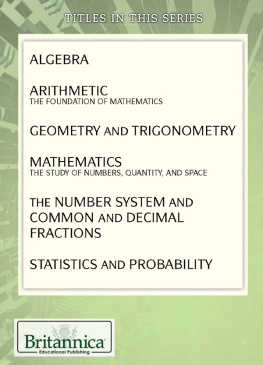
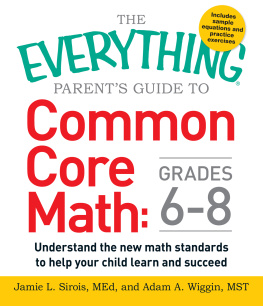
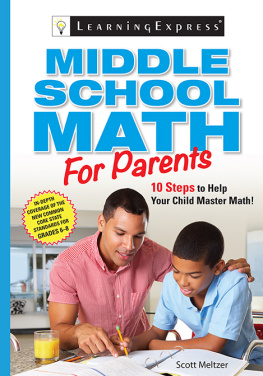
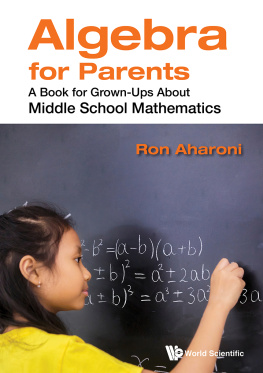
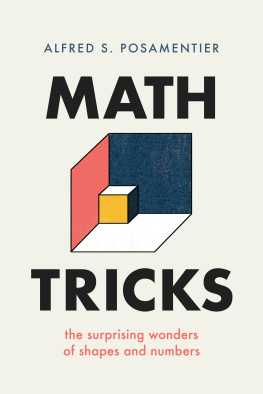
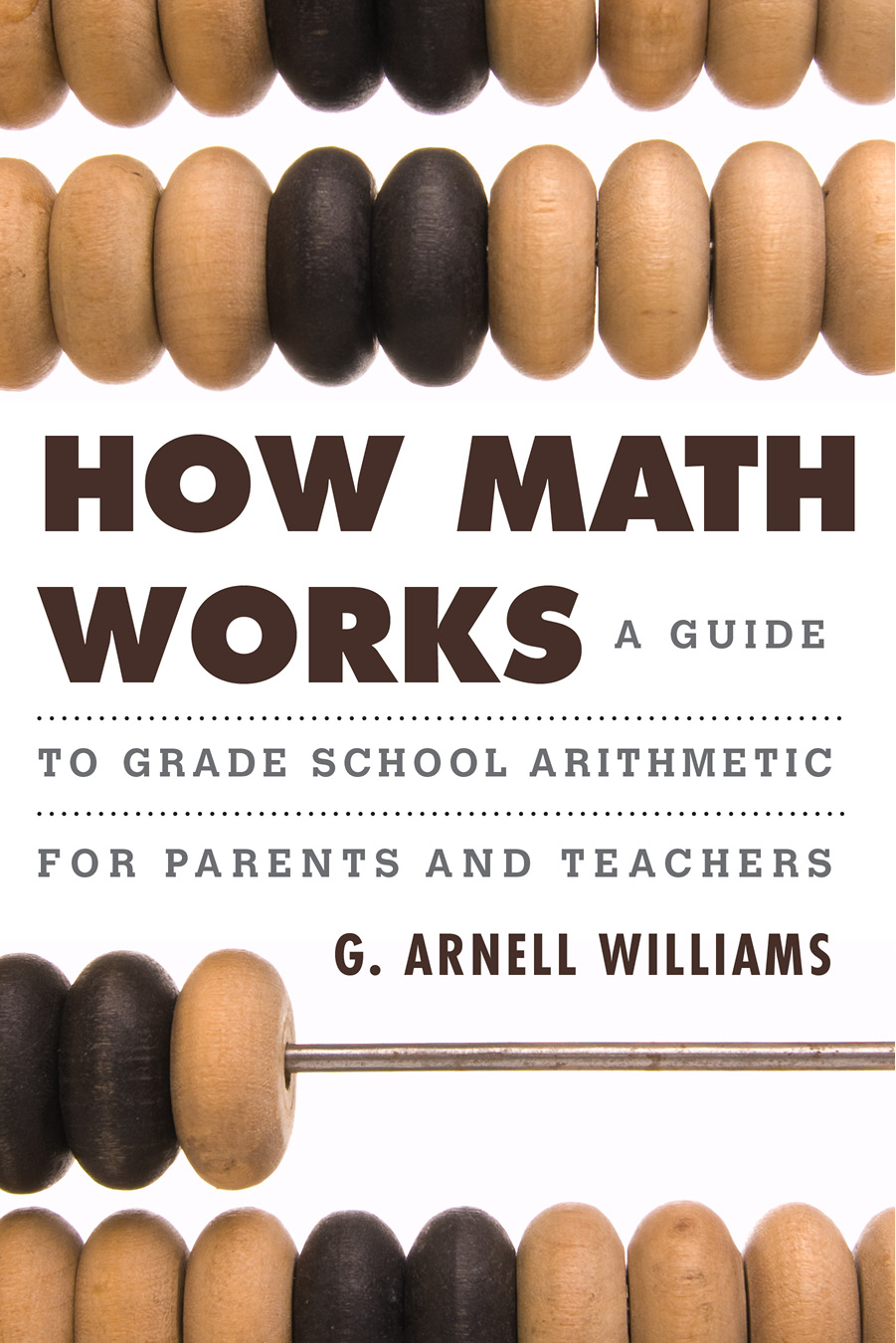
 The paper used in this publication meets the minimum requirements of American National Standard for Information SciencesPermanence of Paper for Printed Library Materials, ANSI/NISO Z39.48-1992.
The paper used in this publication meets the minimum requirements of American National Standard for Information SciencesPermanence of Paper for Printed Library Materials, ANSI/NISO Z39.48-1992.